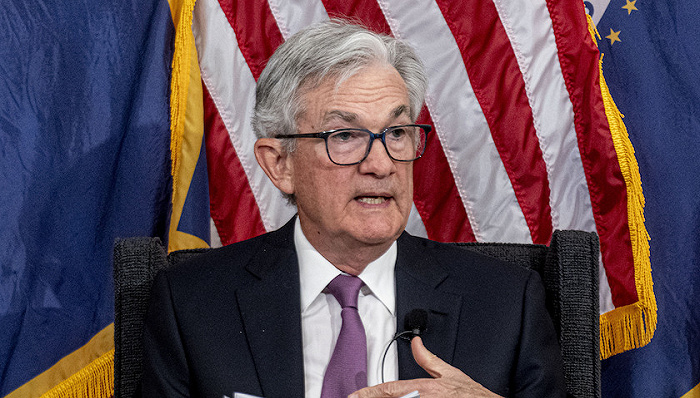The Fed is scheduled to “skip” this rate hike, indicating that it will raise rates twice more this year
After raising interest rates 10 times in a row, the Federal Reserve said on Thursday that it would keep the federal funds rate at a range of 5% to 5.25%, but indicated that if the economy and inflation did not cool further, they would be inclined to raise rates later this year.

Most of them expect two more rate increases this year, and have inflated expectations of growth and inflation in economic speculation.
“Leaving the pillar purpose area unchanged at this meeting will allow committee members time to evaluate more information,” the strategy statement published after the meeting said. The decision was unanimous among Fed officials.
Fed President Jerome Powell said in a press conference after the meeting that almost all Fed officials thought it would be appropriate to raise interest rates “further” in 2023 to boost inflation. But he did not say whether the next increase would come at a rally in July.
“Inflationary pressures remain stubbornly high, and the journey back to 2 percent inflation has a long way to go,” Powell said. At the same time, he also pointed out that considering the rate of previous increases, the Committee thought that the unchanged pillar rate this month was prudent, and the suspension of interest rate was a continuous slowdown in the pace of strategy.
“We’ve recovered a lot of lost ground, and the effect of compression hasn’t all gone away,” Powell said.
Since March 2022, the Fed has carried out the fastest series of interest rate increases since 1980, raising the federal funds rate by a cumulative 5 percentage points. The central bank has stepped up its pace this year, increasing rates by 25 basis points at each of its past three meetings, the last in May.
The Fed was widely expected to “skip” the meeting, a term officials prefer to “pause” because “pause” implies the ability to leave its long-term pillar rate unchanged.
Both Powell and Fed Vice President Philip Jefferson have indicated in recent conversations that they will hold their fire at the gathering to give policymakers more time to assess the impact of their previous interest-rate strategy and banking stress.
What is surprising is the “dot plot” of the interest rate path announced this time. The chart shows that the median policy rate is expected to fall to 5.6% by the end of the year, compared with the 5.1% forecast in March.
With 12 of 18 policymakers expecting rates to be at or above the median range of 5.5 per cent to 5.75 per cent, a quarter-point increase at each meeting would mean two more increases at the four remaining meetings this year. Of the remaining six, two expect no increase this year and four expect one increase.
Policymakers also raised their interest rate projections for the next few years, estimating the federal funds rate at 4.6 percent in 2024 and 3.4 percent in 2025, up from 4.3 percent and 3.1 percent in March.
However, the expectation of the ungone is also clarified, if the outlook pillar is unchanged this year, the Fed will cut interest rates by a full percentage point next year. The long-run expectations pillar of the federal funds rate is at 2.5%.
At the same time, Fed officials raised their forecast for economic growth this year to 1% from 0.4% in March. Officials were also more optimistic about unemployment this year, estimating the unemployment rate at 4.1 percent by the end of the year, compared with a 4.5 percent forecast in March.
Powell pointed out that the labor market is still very tight. According to the latest data, 339,000 new jobs were added in May, and the status gap remains high.
On the inflation front, Fed officials raised their forecast for focus inflation (excluding food and motivation) to 3.9 per cent and slightly lowered their forecast for headline inflation to 3.2 per cent. Forecasts in March were 3.6% and 3.3%, respectively.
Inflation has fallen from last year’s peak, but is still well above the Fed’s 2% target. The central bank’s inflation target, the personal consumption price index (PCE), rose 4.4 percent in April from a year earlier, and the focus PCE rose 4.7 percent.
Another measure of inflation showed no encouraging signs of slowing. The consumer price index (CPI) rose 4% in May from a year earlier, the lowest level in more than two years. But the focus CPI rose 5.3 per cent year on year, slightly higher than expected.
And once inflation falls significantly, it can “take years” to cut rates.
All three major U.S. stock indexes rose during the session on the hawkish signal from the Fed, but stabilized after Powell appeared undecided about a July meeting. At the start of the day, the Dow was up 0.68%, or 232.79 points, at 33,979.33. The S&P 500 rose 0.08% to 4,372.59. The Nasdaq rose 0.39% to 13,626.48.